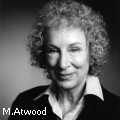Notable Figures in Canadian Writing
Canada only officially became a country on July 1, 1867, so some have argued that what was written there before that time was really the literature of British citizens living away from Britain, French citizens away from France, etc. For example, Susanna Moodie and Catherine Parr Traill, English sisters who adopted the country as their own, moved to Canada in 1832.
They recorded their experiences as pioneers in Parr Traill's "The Backwoods of Canada" (1836) and "Canadian Crusoes" (1852), and Moodie's "Roughing It in the Bush" (1852) and "Life in the Clearings" (1853). However, both women wrote until their deaths, placing them in the country for more than 50 years and certainly well past Confederation. Moreover, their books often dealt with survival and the rugged Canadian environment-these themes re-appear in other Canadian works, including Margaret Atwood's "Survival." Moodie and Parr Traill's sister, Agnes Strickland, remained in England and wrote elegant royal biographies, creating a stark contrast between Canadian and English literatures. However, one of the earliest 'Canadian' writers virtually always included in Canadian literary anthologies is Thomas Chandler Haliburton (1796-1865), who died just two years before Canada's official birth. He is remembered for his comic character, Sam Slick, who appeared in "The Clockmaker" and other humourous works throughout the Haliburton's life. Arguably, the best-internationally-known living Canadian writer (especially after the recent passing of Canadian greats, Robertson Davies and Timothy Findley) is Margaret Atwood, a prolific novelist, poet, and literary critic. This group, along with Alice Munro were the first to elevate Canadian Literature to the world stage.
During the post-war decades only a handful of books of any literary merit would be published each year in Canada and Canadian literature was viewed as an appendage to British and American writing. Much of what was produced dealt with extremely typical Canadiana such as the outdoors and animals, or events in Canadian history. Most of what Canadians read was written in the United States or Great Britain. Most of what was studied in Canadian schools and universities was also foreign.
In the 1980s Canadian literature began to be noticed around the world. By the 1990s Canadian literature was viewed as some of the world's best and Canadian authors began to accumulate international awards. In 1992 Michael Ondaatje became the first Canadian to win the Booker Prize for "The English Patient." Atwood would also win it in 2000 for "The Blind Assassin," while Yann Martel would win in 2002 for "The Life of Pi." Alistair Macleod won the 2001 IMPAC Award for "No Great Mischief." Carol Shields's "The Stone Diaries" won the 1995 Pulitzer Prize for Fiction, and in 1998 her novel "Larry's Party" won the Orange Prize.

